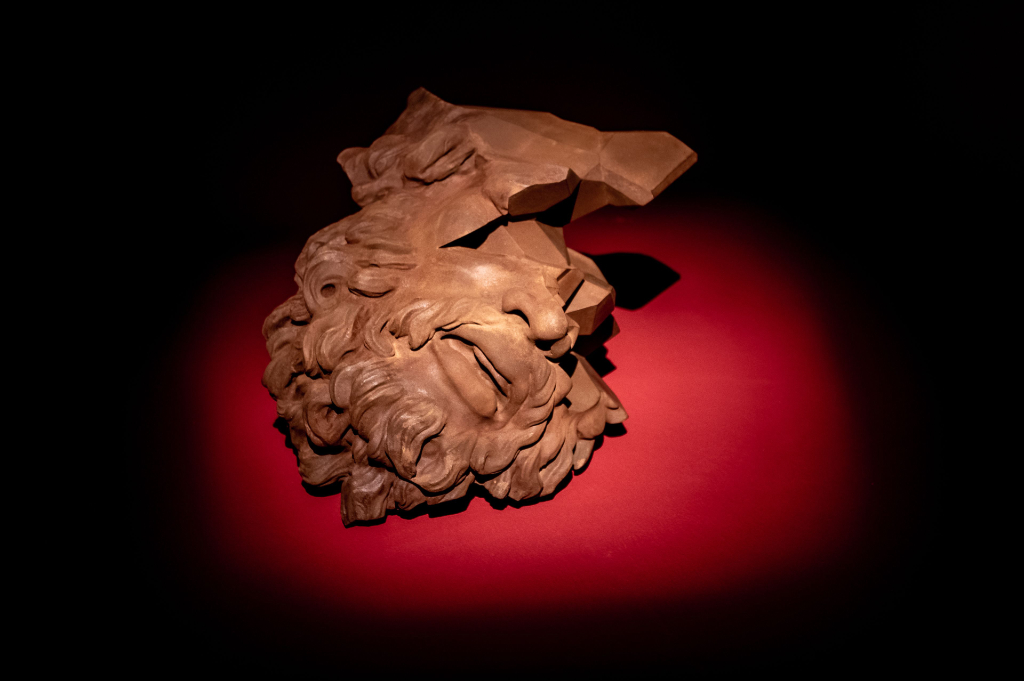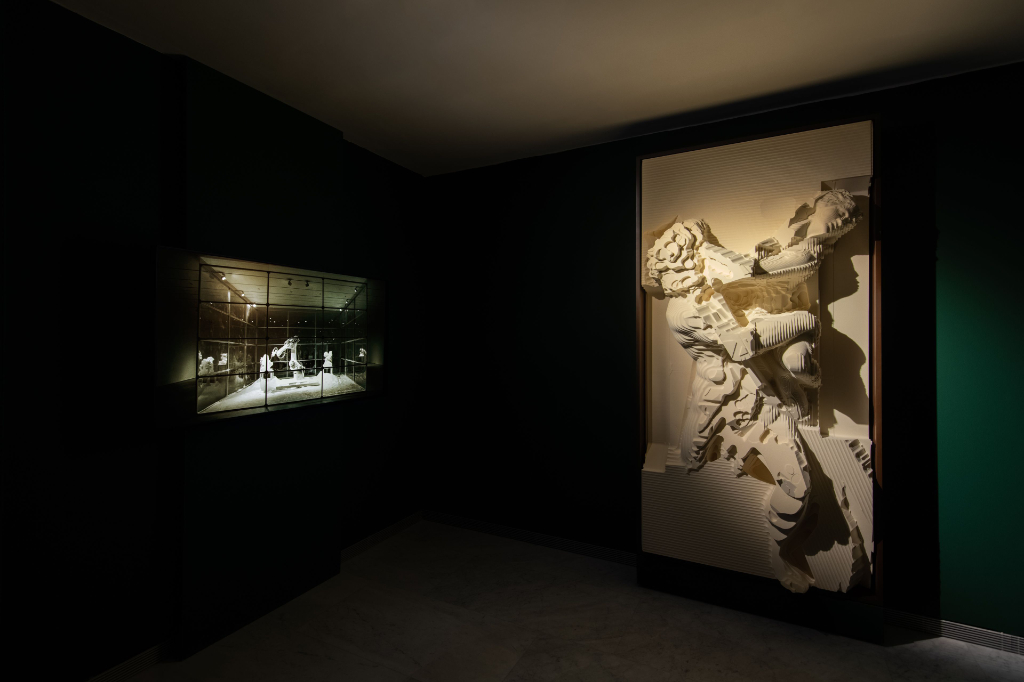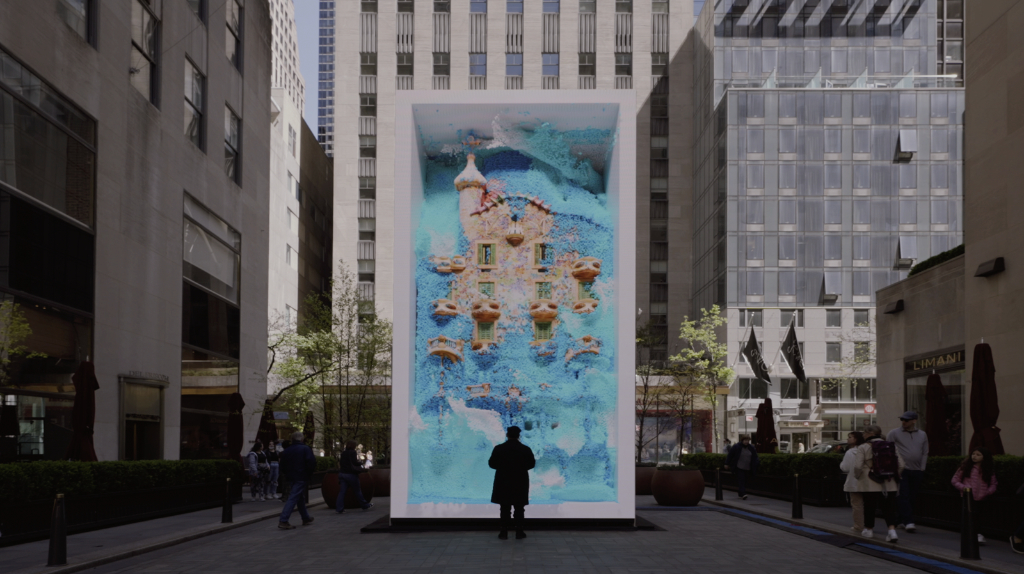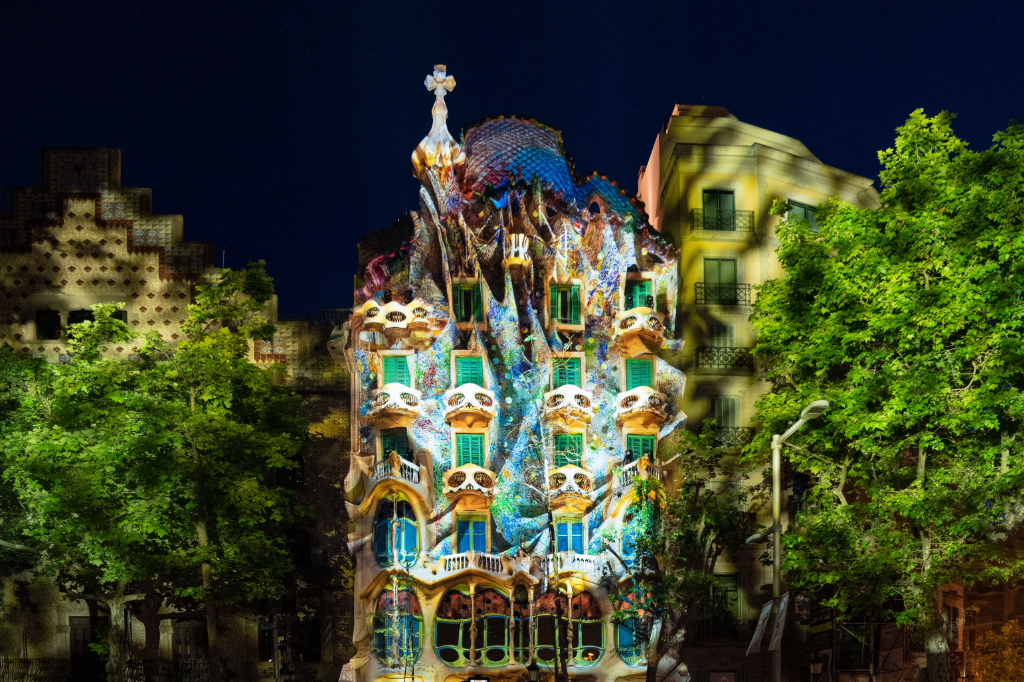Text by Irem Erkin

Today it is possible to dream and imagine in pixels, compose them in harmony through codes and algorithms, and finally download them to the physical world in the form of artworks. It is also possible to time travel and take the pieces of the wildest dreams of artists of all times and re-create their masterpieces through the “mind” of a machine.
Nowadays, artists can smooth these machines’ “rough metal edges” with colour and sugar, coating their binary tongues with some still vibrant feelings of artists from the Renaissance or Baroque. So today, artists can keep painting with a brush that could have been left by Rubens next to a 17th-century masterpiece, carve with a robot hand a touch on Michelangelo’s non-finito (unfinished) sculptures, insert a note from the 21st-century into a Mozart concerto or bring life to Gaudi’s architecture.
Ironically, the most intimate, humane connection between artists from past centuries and the present is possible via an artificial bond. We’ve been witnessing a real-time connection to an artistic work in progress ongoing for centuries. Take, for example, how artist Davide Quayola extends a mechanical AI hand to carve the thoughts of Michelangelo’s Non-Finito sculptures, creating an exquisite harmony of analogue and digital in a glitch of centuries, in his series Unfinished Sculptures (2014 – ongoing).
Contemporary artists are augmenting their capacity to create and reinterpret old art forms with advanced technology, such as augmented reality, virtual reality, data, and code, and reveal a perfect antidote for the fear that digital wires may be a rope around our necks. Instead, these artists reach out to the source of inspiration and gather precious bits and components of paintings, songs, literature, and sculptures, from the past and blend them with the ultimate innovation. They exquisitely fuse the artificial with the human to make it familiar to our organic touch and let it breathe and blend into our collective aesthetic consciousness.
As I mentioned before, Davide Quayola admirably expresses this in his first monographic exhibition, Re-coding, through his sculptures carved by robots, paintings with data and poems of past and present, real and artificial. He salutes Michelangelo, Botticelli, Rubens, and Caravaggio throughout a mind-storming immersive experience, and as a result, he consolidates his prominence in the future of these novel art forms.



Computational artist and digital polymath Memo Akten celebrates life, nature, and the universe through the imagination of a deep artificial neural network in his large-scale video and sound installation called Deep Meditations: A brief history of almost everything (2018). The work embraces and celebrates the interconnectedness of all human, non-human, living and non-living things across many scales of time and space – from microbes to galaxies. For this piece, Atken used an artificial neural network trained on images tagged with the words “everything, life, love, art, faith, ritual, worship, god, nature, the universe, cosmos (and many more)”. The results show a complex and subtle interaction between the human and machine while questioning if we could teach a machine abstract human concepts.
Another example is media artist Refik Anadol, a pioneer in the aesthetics of machine intelligence. His body of work addresses the challenges and the possibilities ubiquitous computing has imposed on humanity and what it means to be a human in the age of AI. In one of his recent works, the immersive installation In the Mind of Gaudí and Living Architecture, Anadol evokes the fantasyland of the modernist master Gaudi through AI data sculptures and visual sculpting. Using real-time data, he takes us on a journey through his young genius’ eye into Gaudi’s genius mind while exploring how the perception and experience of time and space are radically changing now that machines dominate our everyday lives.
Many artists have been fond of new technologies and used them to express their creativity throughout history. We can go as far back as Leonardo Da Vinci or, more recently, pioneers of new media or computing art with names such as Vera Molnar, Naim June Paik and Roy Ascot…the list would be very long. But nowadays, the most significant difference is that technology is advancing so rapidly and to a level that it has reached a very human-like state, almost becoming a piece or an organ of the artists, an inseparable part of their creation.
Before our very eyes, there is the rebirth/renaissance of a new, hybrid artistic mastermind that extends beyond time and imagination, expressing new kinds of beauty. An Artificial Renaissance is the rebirth of a state of mind in creating art, embracing the symbiosis of man-woman & machine, the rediscovery of the aesthetics interlaced with technology or giving new aesthetic values to quantitative materials such as data.
I see that the most challenging conflict between the man-woman and machine is the human evolution of accepting the death of anthropocentrism and still feeling supremacy over non-human species. In this case, with a grudge, machines hold onto our ego of “being the creator” of the code.
The fear of confronting existence, the dominance of a more intelligent and uncontrollable power on earth beyond us that may ultimately lead to our extinction, has been the never-ending nightmare of all times. Instead, we could embrace, be empowered, enlighten, enrich and become one. It is possible to dream in pixels without limits through a hybrid mind, which shall not make it less of a dream…






